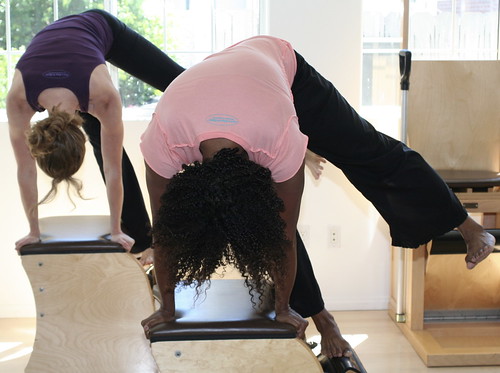 Equipment actually makes you stronger at the mat exercises. Most locations now offer Reformer group classes, so why not try it out? Resembling a twin bed with horizontal springs for full body resistance, the Reformer is the most commonly used piece of Pilates equipment today.
Equipment actually makes you stronger at the mat exercises. Most locations now offer Reformer group classes, so why not try it out? Resembling a twin bed with horizontal springs for full body resistance, the Reformer is the most commonly used piece of Pilates equipment today.There are several types of Reformers which can range from wood to metal frames and leather to rope straps for resistance. The one pictured at right is a classical Peak brand. There are springs used for resistance or your own body weight as on the mat. Reformer exercises can be done lying down such as in Footwork, sitting as in Hug a Tree, kneeling as in Chest Expansion or standing for Side Splits. You are also able to use props such as a box for Pulling Straps, "jump" board to get your heart pumping, or a wooden pole for posture work in the Short Box series. The versatility of this machine is what makes it so popular with clients.
Workouts on the reformer focus on quicker strength results for more visible tone in your arms, legs and abdominal muscles. You also work on endurance, moving with grace, stability in a variety of different positions and assisted stretching. With over 100 exercises possibilities, each session can vary to fit the individual.





